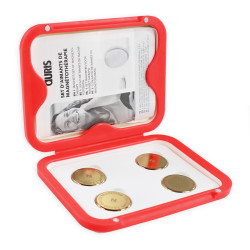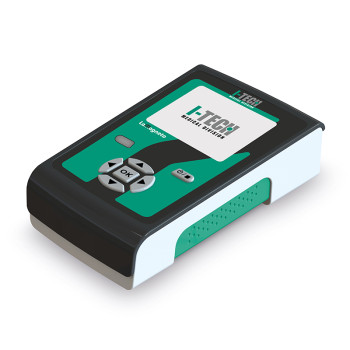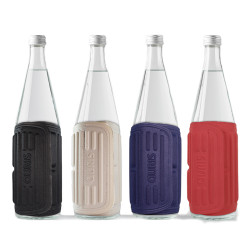Magnetic therapy: an unexpected ally in muscle recovery for athletes
Recovery is a key element in sporting performance. Whether you're a professional athlete or a passionate amateur, it's crucial to allow your muscles to recover effectively after intense effort. This is where magnetotherapy comes in, an alternative medicine based on the action of powerful therapeutic magnets. Let's delve into the details of this natural method, which has no side effects.
What is magnetotherapy?
Magnetic therapy is a gentle, pain-free treatment that uses magnetic fields to influence the body's biological processes. It is based on the use of permanent bipolar magnets or devices that generate pulsed magnetic fields that are applied locally to areas of the body requiring special treatment. Numerous testimonials and studies demonstrate its effectiveness in relieving pain, reducing inflammation and improving blood circulation.
Why is muscle recovery essential?
After intense physical exercise, the body suffers micro-lesions of the muscles and an accumulation of toxins (such as lactic acid) in the muscles. If this damage is not treated properly, it can lead to pain, stiffness and a slowdown in sporting progress. Recovery techniques such as stretching, rest, massage and hydration are often recommended. However, magnetic therapy is now emerging as a promising alternative and complement for optimising muscle recovery.
The benefits of magnetotherapy for sports recovery
Magnetic therapy works on several levels to help sportspeople recover more quickly from their exertions:
- 1. Improved blood circulation and tissue oxygenationThe magnetic fields used in magnetotherapy encourage blood vessels to dilate, increasing blood flow to the targeted areas. This increase in circulation improves the supply of nutrients and oxygen to the muscles involved, speeding up their regeneration. Metabolic waste products are also eliminated more quickly, reducing the feeling of muscle fatigue.
- 2. Reduced inflammation and painAfter intense effort, muscles can become the site of painful inflammation. Magnetic therapy helps to reduce inflammatory responses and the perception of pain. It is therefore particularly useful for relieving aches and pains associated with muscle microtears.
- 3. Stimulation of melatonin productionThis plays a crucial role in helping people to fall asleep and improving the quality of their sleep, which is particularly important for athletes. This effect allows them to feel more relaxed and recover more easily mentally after exercise.
- 4. Accelerated healing of injuriesMuscle and joint injuries are an unfortunate part of life for all sportspeople. Magnetic therapy is recognised for its beneficial effects on tissue healing. The application of magnetic fields can help to reduce the recovery time needed after a sprain, tear or other injury.
How can magnetic therapy be incorporated into a recovery programme?
Magnetic therapy can be applied in different ways, depending on the preferences and needs of the sportsperson. Here are some common options:
- Loose magnets: these are small magnets that are placed directly on the painful areas of the skin, using adhesives. They can be worn for several hours, or even all day.
- Magnetic therapy textiles: ankle braces, elbow braces, knee braces or belts, these orthoses incorporate permanent magnets, placed judiciously to target specific areas while offering optimum comfort. Easy to put on and take off, and specially designed to encourage movement, they can be worn during recovery as well as during exercise. These magneto-active textiles are particularly popular with sportspeople suffering from chronic pain.
- Pulsed-field devices: these electrical devices generate pulsed magnetic fields whose frequency and intensity can be adjusted as required. They are generally used in 15-30 minute sessions and provide in-depth treatment of the tissues.
Testimonials and studies on magnetotherapy in sport
A study published in the Journal of Athletic Training showed that the use of pulsed magnetic fields helped to reduce the healing time of certain muscle and tendon injuries. What's more, many top sportsmen and women have testified to its effectiveness in improving comfort and speeding recovery, particularly in endurance sports such as marathon running and cycling.
Magnetic therapy: a natural, complementary solution
Ultimately, magnetotherapy is a natural, pain-free method with no side-effects for supporting muscle recovery in sportspeople. Whether it's to soothe aches and pains, promote the healing of injuries or optimise recovery phases, it is an interesting complement to more traditional methods.
By combining magnetotherapy, rest, appropriate nutrition and other recovery techniques, athletes can maximise their potential and continue to excel.



